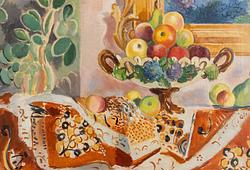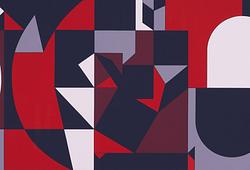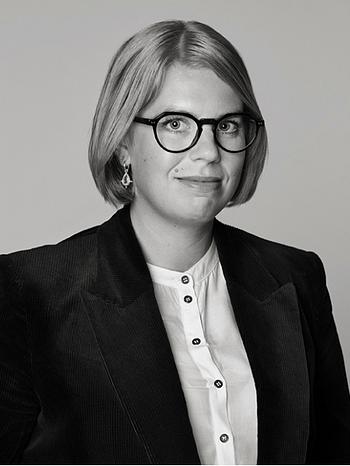Sven X:et Erixson
"Höstkväll på Götgatan"
Signed Sven Erixson and dated -37. Canvas 65 x 81 cm.
Provenance
The Collection of dentist Bertil Claesson, Sundbyberg.
Exhibitions
Sundbybergs Allmänna Konstförening, "Konst ur Sundbybergshem" 20-27 May, 1951.
Liljevalchs konsthall, Stockholm, "Sven Erixson", 12 October - 12 November, 1961, cat. no. 143.
Moderna Museet, Stockholm, "Sven Erixson", 1969, cat. no. 104.
Kunstnernes Hus, Oslo, "Sven Erixson Bror Hjorth", 20 January - 18 February, 1973, cat. no. 75.
Literature
Sveriges Allmänna Konstförening Publikation lxxv, "Sven Erixsons konst", 1967, illustrated p. 111.
Listed in "X:et-sällskapets verkkatalog", 2003, year 1937, p. 31.
"Konst i svenska hem", vol. I, listed p. 279, included under collection no. 451 Dentist Bertil Claesson, Landsvägen 58, Sundbyberg.
More information
Sven Erixson painted a few Stockholm scenes already during the 1920s – such as “Stockholms ström i marsgrått” (1927) – but it was only after his move to Urvädersgränd in 1931, and later to Bastugatan 15 in 1934, that he began in earnest to create a series of paintings from the capital, primarily focusing on the area around Slussen. It was the bustling life of the city that he wanted to capture above all, depicting what he himself saw and experienced. Here, he captured Stockholm’s changing seasons in works such as “Vårkväll, Stockholm” (1931), “Sommardag, Mosebacke torg” (1932), “Folkliv på Katarina kyrkogård” (1931), the wintry view from his studio at Urvädersgränd 9 in “Stad i ljus” (1932), and the auction lot “Höstkväll på Götgatan” (1937).
The area around Slussen was undergoing rapid transformation in the early 1930s. The new traffic system was developed between 1933 and 1935, while the old Katarinahissen was replaced by a new one. During this decade, Erixson painted at least twenty works depicting the Katarina Elevator and Slussen, several of which are now represented in the country’s leading museums.
Artist
Sven Erixson, today more commenly known as X, was born in 1899 in Stockholm. He studied to become a decoration painter and art teacher at the Technical School in Stockholm after which he studied at the Higher School of Art and Design alongside study trips to Germany, France, Italy, Spain and North Africa. Despite being an inportant artist amoungst Swedish art, Erixson does not let etiquette and style limit his painting style. His greatest creation is defined by a tempremental style in stark colour patterns. Erixson's paintings balances between impressive, somewhat brutal expressions and a soft lyricism. He is one of the founders of the group Färg och Form, whose primitivist faction he belonged to. With an aura of narrative joy, Erixson recounts his experiences. He had an irresistable desire to share everything that he saw. He was inspired, much like Bror Hjorth of both folk art and mural painting from the middle ages, while also finding inspiration from German expressionism. But he speaks with greatest esteem about Chaim Soutines art. In a multitude of paintings, he conveyed his zest for life, with surfaces filled with swiftly captured figures. During the 1930s, his visual world was filled with family and the idyllic torpor, his canvas became greater and more complete. During the war he painted on butter paper, not only for practicalities sake, but also to take advantage of the slippery reflective surface which the paper supplies. Narration decreased in the 1950s when he was influenced by spontaneity, which in the following years led him to abstract spontaneous painting.
Read more






























































